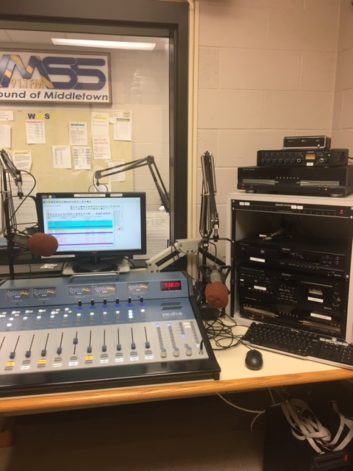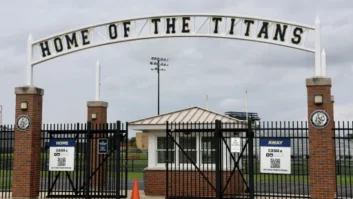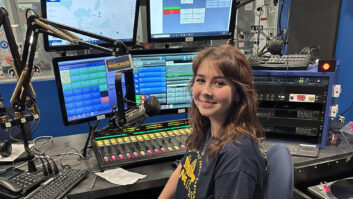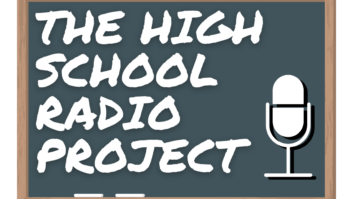
The operations of WMSS(FM) in the Pennsylvania borough of Middletown near Harrisburg were affected by the coronavirus, like those of most U.S. stations. But WMSS also happens to be a high school radio station, which provides a further twist.
We asked General Manager John Wilsbach how things were going and to give us a brief history of the station.
Radio World: How has COVID-19 changed how the station operates?
John Wilsbach: Students were dismissed from school Friday, March 13, and we haven’t seen them since. The school would not allow any students on the campus.
We immediately went to our summer hours of 6 a.m. to 6 p.m. Since most commercial stations went to “at-home” broadcasting, I did all of my announcing from WMSS while handling the full operations of the station, with the engineer and faculty advisor filling in from time to time. The station was giving regular updates on the COVID news, local food bank info, public affairs medical programming, and live town halls with Congressman Scott Perry.
RW: Tell us about WMSS.
Wilsbach: It is a high school FM radio station at 91.1 FM. It’s normally on the air daily from 6 a.m. until 9 p.m., unless high school sports programming extends the broadcast day past that. We are 6 a.m. to 6 p.m. in the summer.

The station is licensed to the Middletown Area School District; we serve the Middletown area, with communities like Hershey, Hummelstown, Highspire, Steelton, Elizabethtown and Harrisburg nearby. The station is 5.5 kW directional.
We are located in the middle school, which is a five-minute walk from the high school. The station uses a Radio Systems Millenium Digital 18-channel console with Livewire in the main studio and a 12-channel console in the production studio.
Our transmitter is a QEI Quantum M series transmitter; we use an Omnia FM3 processor with an Optimod 8100A as a backup. Our mod monitor is an Inovonics 531.
Our students use Prophet NexGen and GSelector on air. We still have a Denon CD player and a Tascam cassette/CD player in the main studio. Our EAS equipment is Sage. For our remote sports games, we have Tieline. And yes, there is still a turntable in the production studio.
[Read the 2019 story “High School Radio Week Arriving”]
RW: How did WMMS get started?
Wilsbach: In 1977, junior high teachers John Cooper and Jeff Johnston read an article in the teachers’ lunch room about a high school that had a radio station. It was obviously very uncommon back in the ’70s. The more they joked about it, the more they became serious about inquiring.

LPB was located in the Exton area, about 70 miles away, and assisted with information. Local engineer Walter Konetsco and radio consultant Ed Perry in Massachusetts were also instrumental with the start-up. The station was awarded an FM license and has been on the air since Oct. 2, 1978.
RW: What role do students play?
Wilsbach: Students can join in grades 7–12. They must first take an exam of radio rules that include some old but relevant questions from the Third Class License Exam and some current operational questions.
The station is mostly automated during school hours. Although the GM is present most of the time, students check the operation and transmitter readings. Regular two-hour shifts run from 3 to 9 p.m. Students are responsible for gathering local public affairs information for airing, news and weather, and for completing their weekly time and projects that go toward their grade. The radio program has a curriculum for students in grades 9 to 12.
RW: And what role do teachers, administrators or professional staff play?
Wilsbach: I’m the general manager, I’m a 1983 graduate of the program and also a commercial broadcaster in the Harrisburg area. I am responsible for the station operation, administration, underwriting and training of personnel.
Brian Keyser is a teacher at the high school and is a 1991 graduate of the program; he is responsible for the curriculum side for the students grades 9–12 and also the training of students. Tim Starliper is the chief engineer and a 1986 graduate of the program, he is responsible for the technical and I-T functions. We’ve also had a couple other graduates who stay involved and assist the station when needed.

RW: What special considerations are involved for a radio station at a school?
Wilsbach: Any school district trying to do a radio station must be fully committed. It cannot be an electronic sandbox. The students are involved all year.
In this day of tight school district budgets, they need to know it’s not cheap. Especially the initial investment and yearly operational costs.
Most schools that can’t handle a 365-day program would be better served with an internet-only radio station where rules, costs and personnel issues aren’t as tough to deal with.
RW: What else should we know?
Wilsbach: Our station airs numerous high school football and basketball, local college sports, church services, nationally syndicated non-commercial programs, and locally produced public affairs programs. We also have news from Radio Pennsylvania.
The commercial stations in our area have always been helpful. They know these are their future employees. Schools starting a new FM or internet station should contact all of the local stations for input and equipment donations.






